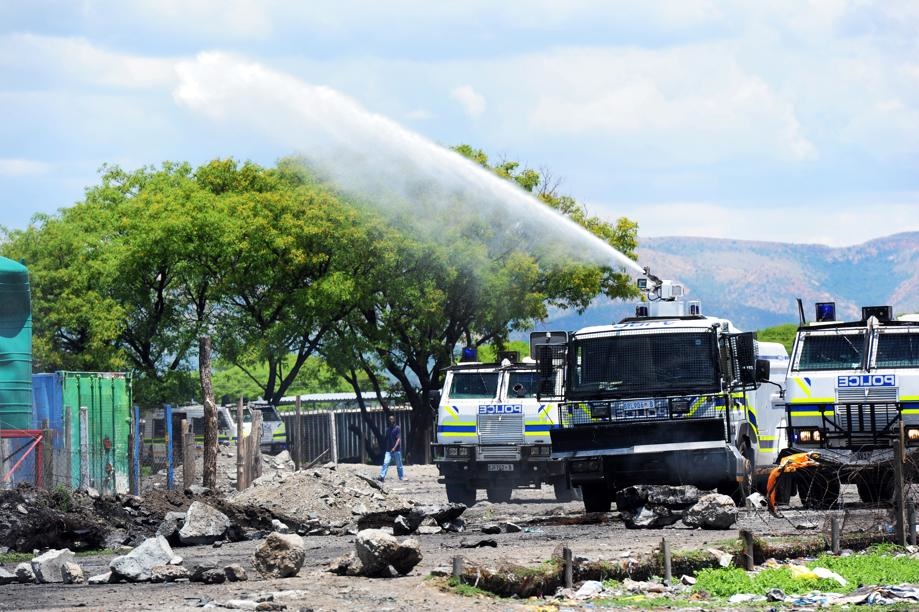
It’s been seven years since 34 mineworkers were shot dead in a burst of police gunfire during a protest at the then Lonmin Platinum’s Marikana operations. Ten people, including security guards and police officers, were killed in the run-up to the mass shootings at two sites around a koppie where workers had gathered during their strike, demanding a minimum salary of R12 500 a month.Much has been said and written about what has become known as the Marikana Massacre, and a commission of inquiry was set up to find out exactly what happened. But there were journalists on the ground when it all went down. This is how they reported on the Marikana Massacre in August 2012.This week City Press went back to Marikana. Read our feature on this ghostly mining town in Sunday’s print edition.
Incompatible systems created a technical bungle that played an important role in the high number of deaths at Marikana, writes Jacques Pauw
Police units at the heart of the Marikana mayhem couldn’t talk to each other because of incompatible radio systems, a technical bungle that played an important role in the high number of deaths.
“Command and control broke down,” a source close to the police investigation into the force’s actions on that day told City Press.
This detail is yet to emerge at the Farlam commission of inquiry, which is investigating the tragic events near Lonmin’s mine on August 16.
Two independent sources close to the police investigation revealed this week that the radio systems problem meant police units simply could not talk to each other as the day unfolded.
Police commanders at the site of the initial volley of fire were unable to communicate with some of their counterparts further down the line. This allegedly led to units opening fire on fleeing strikers.
Both sources said this breakdown contributed to the high death toll at Marikana, where independent reports say the majority of deaths occurred hundreds of metres away from the initial shooting scene whose televised scenes shocked the world.
City Press understands that a police report circulated to top brass highlights the radio systems problem, among other critical lapses.
The report is understood to show that police failed to discuss the potential radio communication problem in their operation’s planning phase.
A number of different specialised and other police units were deployed on the day, and the operation was the biggest of its kind since 1994.
Specialised police units such as the special task force, the tactical response team and the national intervention unit – all present at Marikana – use the state-of-the-art Terrestrial Trunked Radio (Tetra) system, which has also been introduced in Gauteng police units.
In contrast, all police units from North West, of which several were on active duty at Marikana, still use the old Orca radio system.
Tetra and Orca are not compatible with one another.
The sources said that when the different units opened fire at Marikana, police commanders rapidly lost control over certain units and could not coordinatetheir actions.
Police commanders on Tetra could not give instructions to units on Orca.
A source with technical expertise said: “Certain police kept shooting long after they should have ceased fire.”
Tetra is an expensive and sophisticated digital police radio system recently introduced to certain police units.
Police spokesperson, Brigadier Phuti Setati, said he could not comment on the report because the commission of inquiry is still ongoing.
On the day of the massacre, police commanders planned to surround, disarm and arrest the striking mine workers.
The public order policing unit was supposed to play a vital role in achieving this.
But when that unit failed to stop the strikers, the task force, the national intervention unit and the tactical response team opened fire.
City Press’ sources said that, in the chaos that followed, other police units joined in the shooting, deaf to calls from other commanders to stop.
One of the lawyers representing the families of strikers killed in the August 16 shootings, Teboho Mosikili, said the police had not yet provided them with the radio communication recordings of its units at Marikana.
He said the police had given them video footage – the aerial footage which was shown and discussed at the inquiry this week – but that it seemed to have been edited and showed very little.
Mosikili said he would request all the police radio communication records of the shooting and the days leading up to it.




 Publications
Publications
 Partners
Partners








